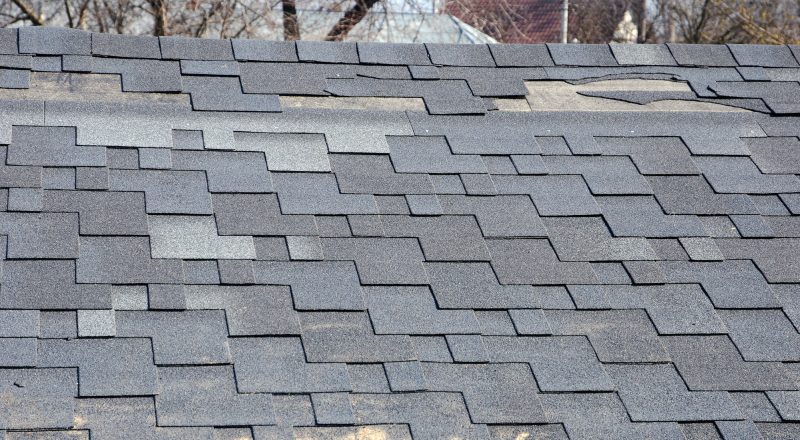Wind storms can do a lot more damage than you think, and it doesn’t take a tree to fall on your house or the roof to blow off to have a major negative impact. So be sure to inspect your roof after heavy wind storms.
To ensure your safety, AH Construction recommends that a homeowner inspect from within the home and on the ground outside of the home. A lot can be noticed from these two vantage points.
Inside your home, including the attic, observe your ceilings and walls for any evidence of active leakage or water stains. Next go outside. Major damage can result due to flying debris like tree branches, shards of glass and other abrasive materials. Look for any evidence of such materials on your roof. Debris can also clog drains and downspouts causing problems in the future.
The edges of your roof experience higher pressure than the center. So while you’re on the ground outside, look at the edges of your roof. Also check for any missing pieces of metal fascia, including metal pieces displaced from around your chimney. Check out your exhaust pipes, roof valleys ,and the angles where the roof meets the walls. These are all high pressure zones , as well. Inspect to ensure that all is tight or if you notice any changes. Look higher to search for any missing shingles. Also look on the ground. This is where blown off shingles would land.
Missing shingles or other blown off, loosened roofing material is a big deal. Such conditions expose your structure to the damaging effects of the elements which will cause structure rot. Rot means more expense in the not so far future. When damage is suspected, best to have it repaired as soon as possible.
Given all of these considerations, homeowners should inspect their roofs from the safe and recommended ground vantage points of inside the home and on the ground outside. If things look suspicious, call a professional right away to do an inspection. And no matter what weather conditions ensue, it is best to arrange a professional roof inspection once a year. This will head off any problems before they get too big or expensive.
